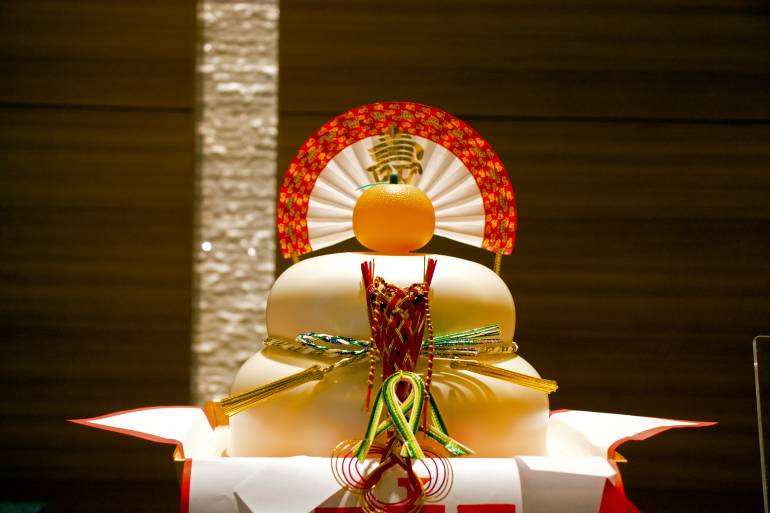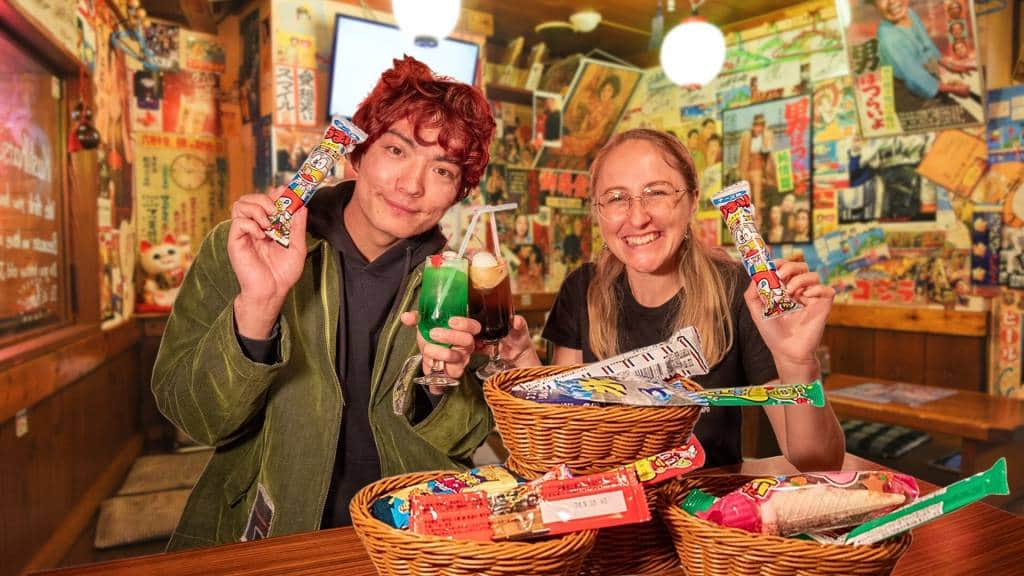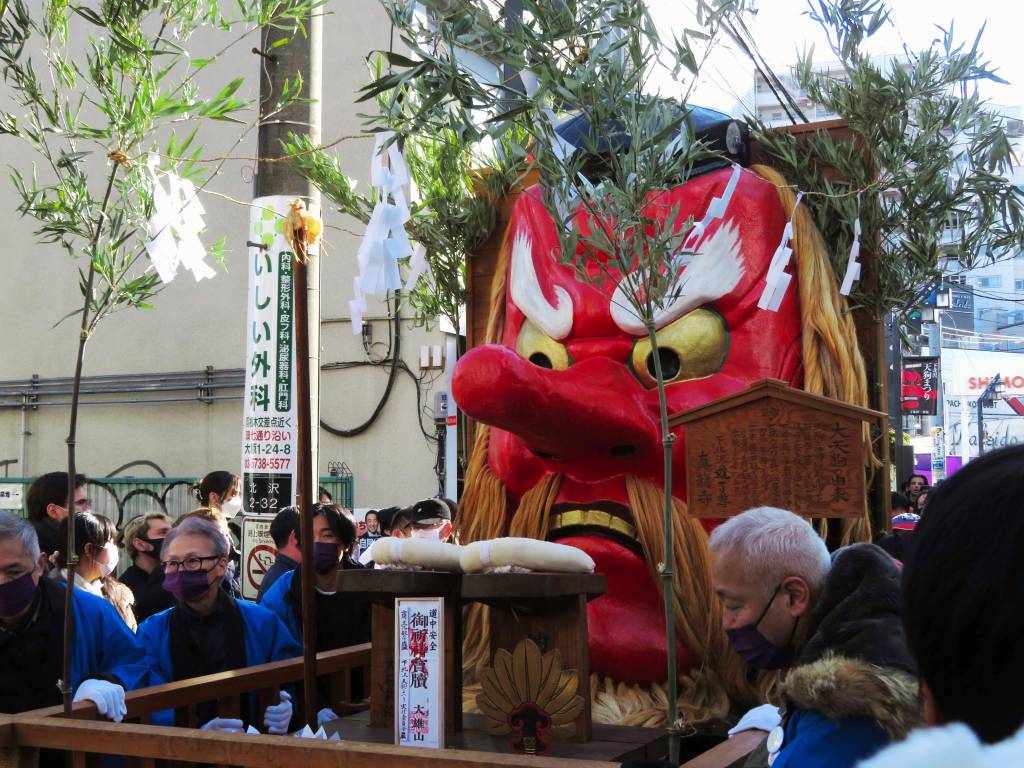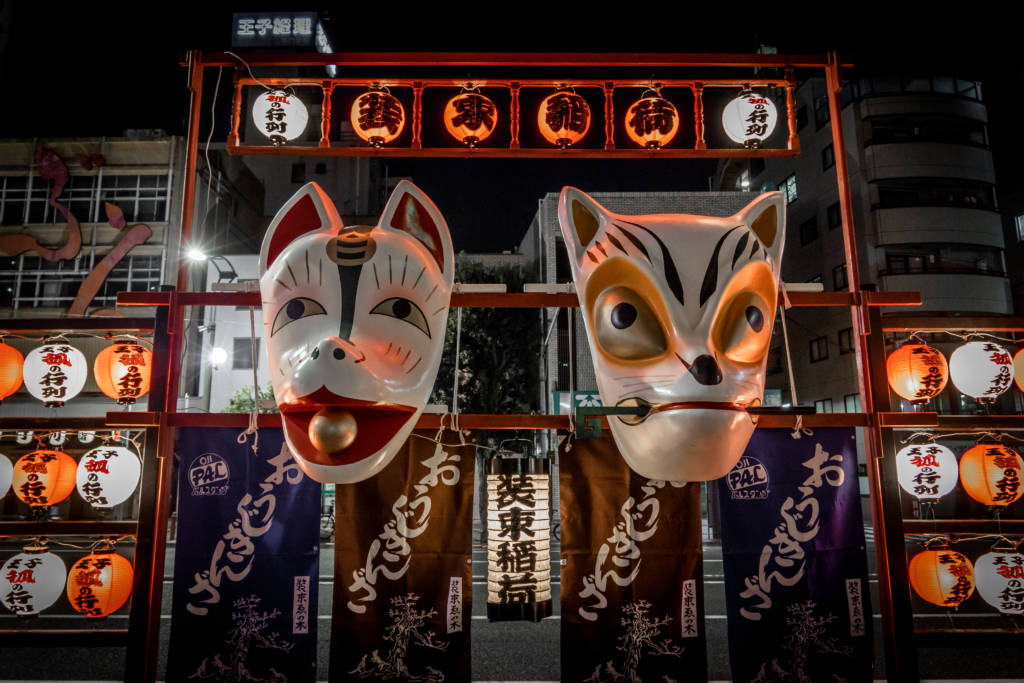If you’re visiting Tokyo in winter, there’s no denying it’ll be cold. But not to worry — there are plenty of delicious Japanese winter foods to warm you up.
Seasons are Japan’s specialty, and winter is no exception. It’s the perfect time to try things like yuzu, tofu, and the risky dinner option of puffer fish — as well as enjoying celebratory dishes to ring in the New Year. Here are our top 10 Japanese winter foods to try.
1. Oden (with daikon and fish cakes)

The familiar smell of oden drifting through convenience stores is a sign that winter is here. But don’t let the grey ponds put you off. Like a savory pick-and-mix stew, the dish is a little intimidating and quite unappealing when seen at first, but definitely worth trying at least once.
With a light soy-based broth, oden features a mixture of jellies, root vegetables, and seasonal treats to choose from, to make up an easy and warming dinner. Some of the regular options include:
- Konnyaku: A jelly made from the root of konjac, which is meant to be great for digestion, usually served in triangles. It sometimes comes as noodles called shirataki.
- Yude-tamago: A boiled egg soaked in the salty broth for a very long time.
- Tofu: In oden, tofu comes in a few different forms, but is a great addition as it soaks up flavor and adds some bite. Keep an eye out for ganmo, a disk of fried tofu with vegetables, and atsuage, which is deep-fried slices of the bean curd.
- Konbu: Kelp shaped like a ribbon, very healthy.
- Cabbage roll: Steamed cabbage leaves wrapped around mince.
- Daikon: A winter radish sliced into circles — perfect if you want a bit of crunch.
- Fish cakes: Hanpen is a fish cake piece, kamaboko is a white and pink fishcake you’ll recognize instantly, and chikuwa is a tube of fish cake.
Once you’ve decided what you want, go ahead and give it a go! It’s a great chance to try winter specialties like daikon and other root vegetables.
Where to find oden in Tokyo: You can pick it up at almost any convenience store, or check out our full guide to oden for specialized spots to try it!
2. Tofu specialties

Although it is available throughout the year, tofu is thought to be at its best during the winter months as they come at the end of the soybean harvest. It’s a great source of protein and available in a huge variety of formats, from soft to firm, freeze dried, fermented, or fried in slices — there’s something for everyone. Prepared tofu is easily available, and cheap too, so you can sample a few kinds until you find the one you like best. Some to look out for include:
- Yudofu: A Kyoto specialty that’s made up of a mild soup with soft tofu pieces, which are then dipped into a soy or ponzu sauce.
- Agedashidofu: A deep-fried tofu served in a hot soy sauce broth, topped with green onion and grated daikon (pictured above). Another way to try it is in kitsune udon — a light broth with udon noodles and a slice of fried tofu.
Where to find tofu in Tokyo: Head to an izakaya for some great affordable options. But for unbeatable taste and quality tofu, look for your local tofuyasan (tofu specialty shop) on a map app. If you’re more hands on, you could take part in a specialty tofu cooking class (¥5,000, weekends only).
3. Fugu (puffer fish)

One for the daredevils among us, fugu is the Japanese winter food that could leave you begging for more, or dead at the first bite. More likely the first, of course, since the delicacy can only be prepared by highly trained chefs with licenses to prove it.
A pale and mild-flavored fish, fugu is served in thin slices, often with yuzu or sudachi, a small green citrus fruit (pictured above) that’s another winter favorite.
Where to find fugu in Tokyo: Kikuchi is an affordable fugu restaurant in Tokyo that offers set menus starting at around ¥4,950. Another option we like is Guenpin, because you can easily make online reservations for different puffer-fish meal sets.
4. Nabe hotpot stew

A general term meaning “pot”, nabe covers a whole range of delicious dishes that are stews or soups cooked in an iron or clay pot.
There are quite a few varieties to try, from the sumo-specialty chanko-nabe, which has plenty of protein, to the simple all-rounder yosenabe, which is any mix of vegetables and meats in a dashi broth.
For meat lovers, make sure you try motsunabe, which has beef and/or pork offal, while sukiyaki is made with thin slices of beef and cubes of tofu. Shabu-shabu is one of the most popular kinds, named after the swishing sound of the thinly sliced meat as you cook it quickly in the hot broth.
The best thing about nabe is that it’s a great group dish. There’s nothing better than sharing a steaming pot with friends, picking and choosing your favorite bits, and combining skills for tricky chopstick maneuvers.
Where to find nabe in Tokyo: There are plenty of great restaurants offering all-you-can-eat nabe sets — we have a full guide to nabe to help you find the one that suits you best!
5. (O)Shiruko and zenzai dessert soups

A sweet treat that just has to make the list, shiruko is a soup made with sweet adzuki beans and mochi balls/squares. There are two different forms: One is made with crushed beans, semi crushed ones, or a mix of the two textures, and the other is made with a condensed paste (zenzai).
Perfect with green tea, shiruko is often served at Japanese confectionery shops and teahouses. This is also a great chance to try mochi, which is a New Year specialty, so you can kill two delicious birds with one stone!
Where to find shiruko and zenzai in Tokyo: Asakusa Umezono (1-31-12 Asakusa Taito Tokyo) specializes in zenzai and is a sweet shop that’s been in business since 1854, so they definitely know what they’re doing!
6. Nikuman steamed buns

A street-food staple brought over from China, nikuman is a steamed bun filled with meat. It’s the perfect pick-me-up on a cold day. Usually filled with pork but sometimes beef, they are simple but filling and give a hearty satisfaction.
There are also modern twists like pizza man, as well as sweet variants like adzuki man (anman). With prices starting at ¥100 in most convenience stores, they are a very affordable snack.
Where to find nikuman in Tokyo: Convenience stores have a variety of flavors. You can also find them at festivals and events, and keep your eyes out in any food markets or old-fashioned shopping areas. Or there’s the Gyokuran restaurant in Shinjuku.
7. Japanese strawberries

While they might scream summer to most of us, strawberries in Japan are a special part of winter, as they take center stage on the Japanese version of a Christmas cake. They are grown in specially raised polytunnels in Japan and are therefore harvested earlier than most countries, and ready in winter rather than spring. Whether you fancy them wrapped in mochi or dipped in chocolate, they are always delicious, so what excuse do you need?
Where to find them: Any supermarket or fruit-and-veg shop will have plenty, and keep an eye out at festivals for candied ones and chocolate-covered treats. Strawberry shortcakes can be found in department stores and supermarkets if you would like to try Christmas, Japan style. Alternatively, you could join a strawberry-picking day trip from Tokyo.
8. More fruit: Yuzu, mikan, and kaki

Nothing says winter like being huddled up under your kotatsu while you enjoy some fresh mikan (above) — the easily peeled, seedless mandarin oranges you’ll see everywhere. Mikan are one of the few fruits exported from Japan in large quantities, and are a real favorite across the country.
Yuzu are a kind of citrus fruit with little pulp. They are often used as a seasoning in broths and toppings, or you can float them in your bath to release delicious scents as you soak.
Kaki, the final of the three winter fruits are best eaten dried for a chewy, fruity snack. A kind of persimmon, they are in season from late autumn. No doubt you’ll see them hanging from strings in villages and shops, as they will last much longer that way!
Where to find them: These fruits are actually pretty cheap compared to imported fruits in Japan, so you’ll have no trouble finding them at markets, supermarkets, and greengrocers. Keep an eye out for seasonal desserts in restaurants as they will often feature kaki and mikan, as well as themed drinks in cafés for a more modern twist.
9. Mochi rice cake

Despite being the cause of death of quite a few pensioners at New Year’s, mochi — a rice cake made from pounding glutinous rice — is a tradition that will live on for the foreseeable future. You might be lucky enough to see mochi-pounding festivals at community events, or see boxed offerings in local shops.
Named kagami mochi and meaning mirror rice cake, the decorative displays (as seen above) are made of two balls of mochi topped with a daidai (a bitter orange) and a leaf. There are more display options, including folded sheets of paper similar to those worn by sumo wrestlers, as well as dried persimmons and a sheet of konbu. The tradition dates back to the Muromachi period, and kagami mochi is often placed in the shrine within the home during the New Year holidays.
10. Osechi ryōri

Osechi ryōri is the name for a variety of dishes eaten to celebrate New Year’s in Japan. Different elements represent different hopes for the year ahead, and they are served in traditional compartmentalized tray-like bento boxes called jūbako. Having started as a Heian-era practice, it is still followed today and is a really fun tradition to try yourself.
Some examples include: Tazukuri, small sardines cooked in soy sauce which symbolize an abundant harvest; kuro-mame, black soybeans that are a wish for health; and kazunoko, herring roe that symbolizes a wish to be gifted with children in the coming year. While it can be pretty expensive to try, we have some affordable osechi options to try in Tokyo too.
Where to find osechi ryōri: Often pre-ordered, osechi can be acquired from specialist shops or department stores, but is never exactly cheap. The most affordable option is to make your own — recipes are simple and you can make the ones you like, rather than picking through unwanted sardines!
Video guide to popular Japanese winter foods
While we do our best to ensure it’s correct, information is subject to change. Post first published in December 2017. Last updated in November 2023, by Maria Danuco.






























